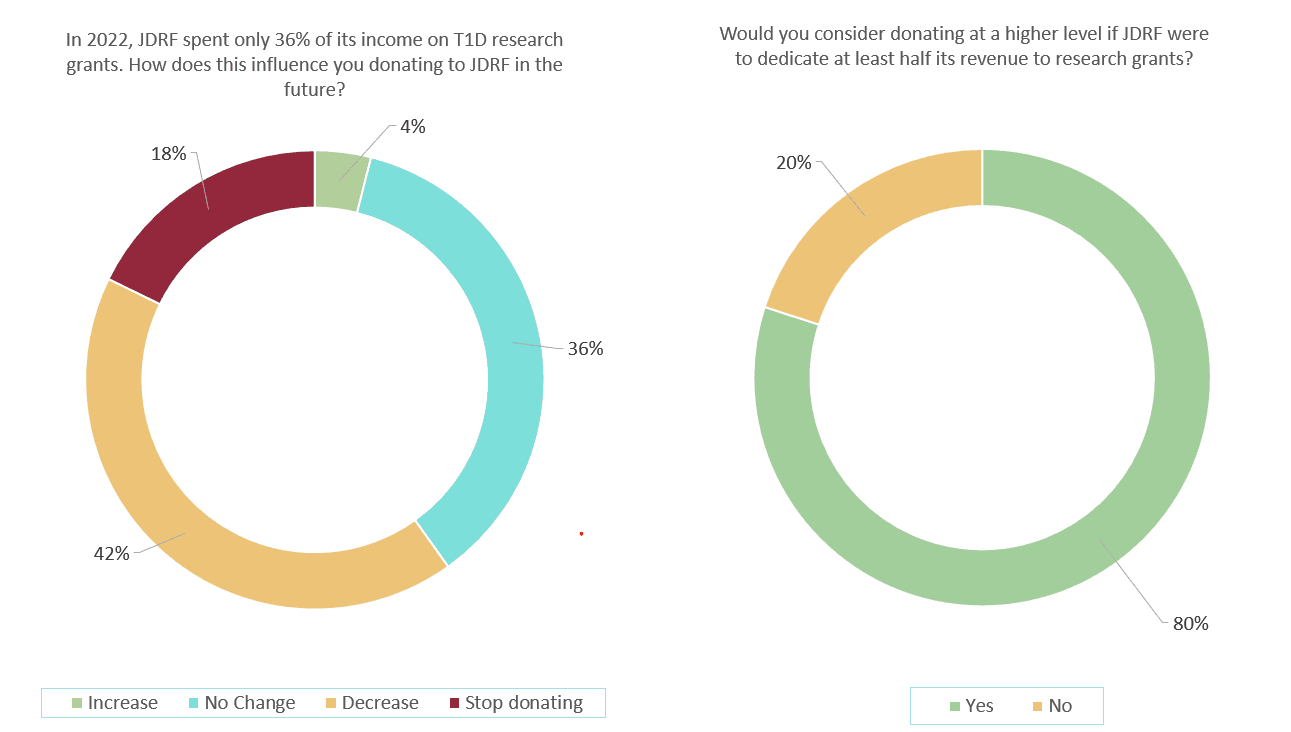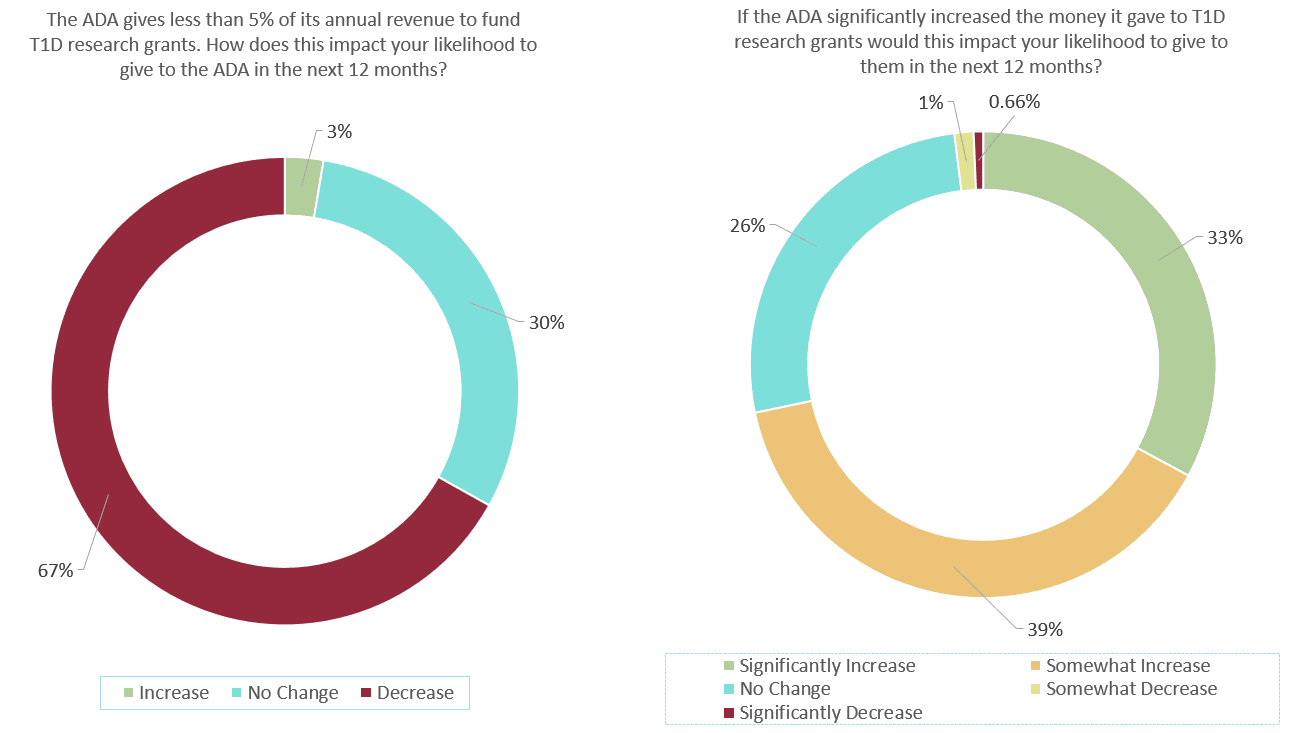
July 27, 2023
The JDCA’s 12th annual donor sentiment and priority survey results are in. Continuing tradition, we sent this survey to individuals directly touched by T1D; who donate to the cause by giving money or participating in fundraising events.
In summary, the survey asks this charitable pool of donors, “How do YOU want your money used by the charities and organizations who receive it?”
For those passionate about finding a Practical Cure for T1D and who hope to expedite the process by donating to research and participating in events, it’s important to know where the community wants their money to go. By doing this, we can hold the organizations accountable to perform in a way that is aligned with our collective priorities.
The survey asked thirteen questions, seeking public opinion on everything from where people choose to donate, to their viewpoints on a Practical Cure.
Key Takeaways
1.) Donors Want Their Money to Go towards Research to Find a Cure
There are a variety of reasons why someone donates to diabetes research. We asked people to choose from a selection of options to find which one is the most influential. The results showed that research to find a cure was the primary reason, winning by a landslide.
To further this, we asked donors, “Do you believe that funding cure research should be the top priority for diabetes charities?” 98% of respondents said: “Yes” —the highest level in the past five years.
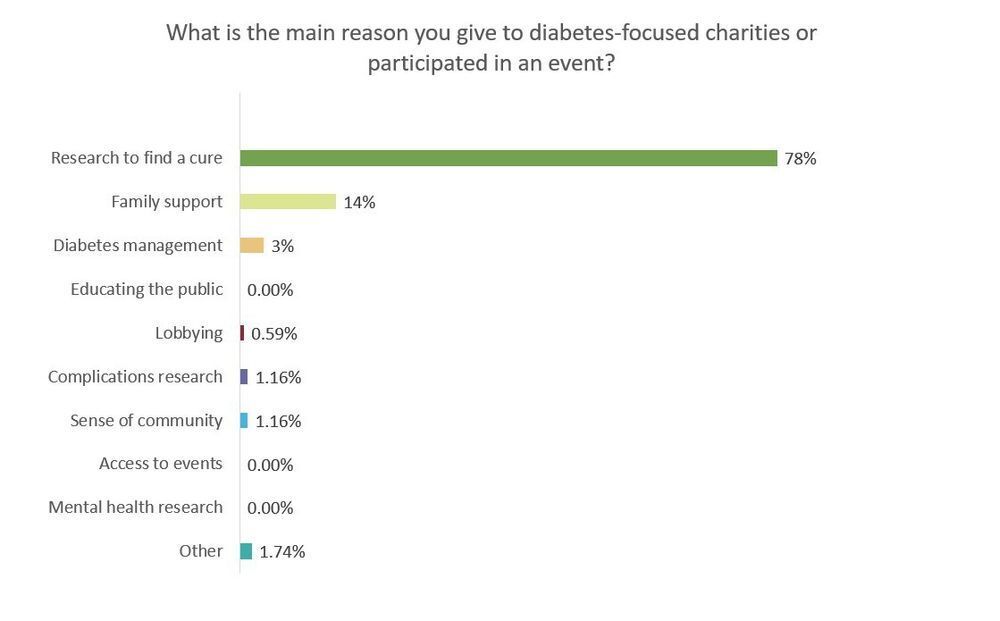
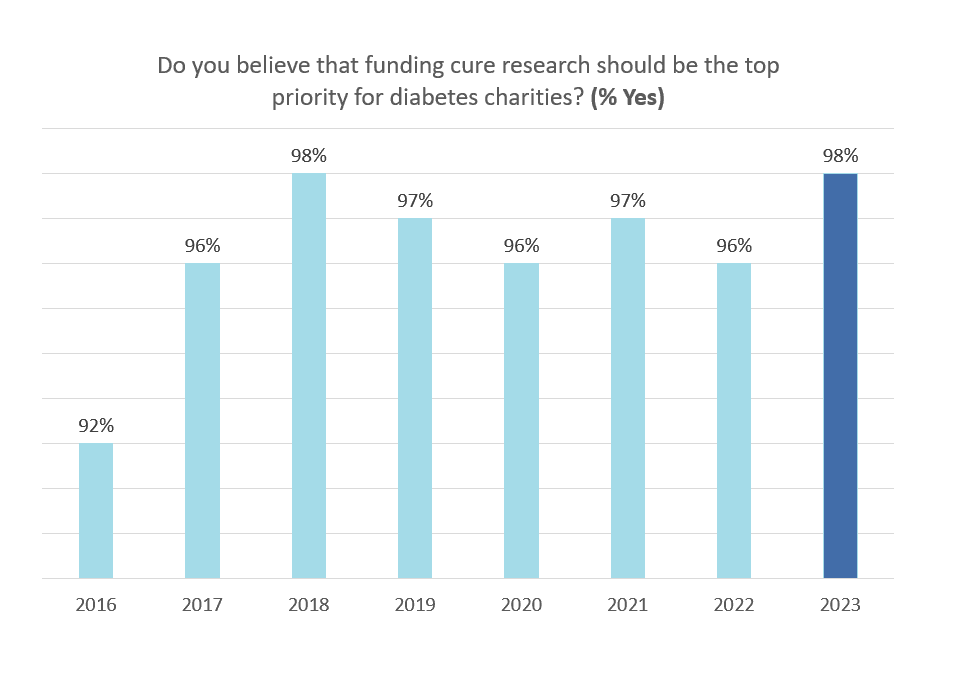
2.) Donors Are More Optimistic That There Will Be a Practical Cure
Every year, we ask donors how optimistic they are that there will be a cure for T1D in the near future.
Typically, this number tends to be low. While it is still low compared to the other choices of 'Less' and 'No Change,' it’s a marked increase in 2023 that definitively reflects the recent progress toward a cure. We suspect this is driven by recent Vertex achievements and the FDA approval for Teplizumab.
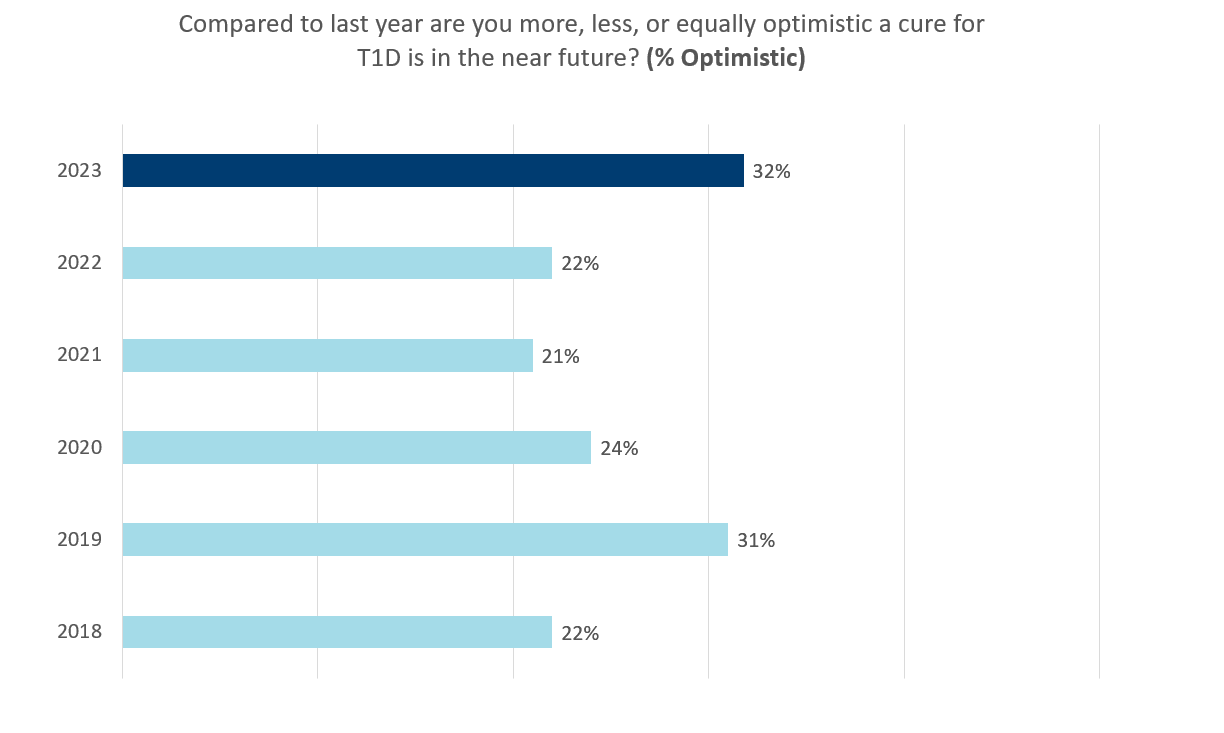
3.) The T1D Community Prioritizes a Practical Cure
The concept of “Practical Cure” is one written in JDCA reports with great frequency and is desired by the T1D community. But what does it mean?
A Practical Cure is not an ideal cure. As much as each and every one of us would love to take a one-dose pill that would factory reset our immune systems for good, that still seems generations away. However, what may be attainable in the next fifteen years is a realistic cure. A Practical (A.K.A. Functional) Cure that doesn’t rely on immunosuppressants, constant monitoring, or risk adverse side effects.
For more information, please see Chart A below.
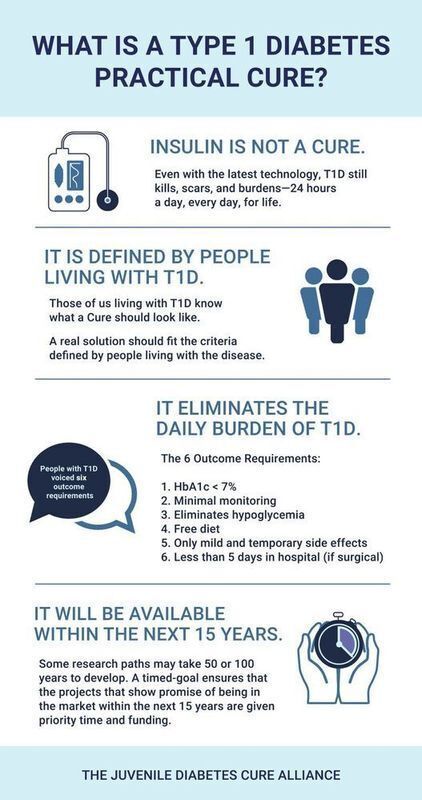
Chart A
It comes as no surprise that finding a Practical Cure remains the #1 priority of the T1D community. For these questions, the results were the highest they have been in several years, showing the unignorable need for a Practical Cure.
When someone donates to diabetes research, they likely assume it will go to a cure for type 1 diabetes point blank. This is not necessarily the case. Many foundations allocate donations toward type 2 diabetes, complications research, prevention, intervention, etc.
(Survey takers referenced the infographic above when answering the following questions.)
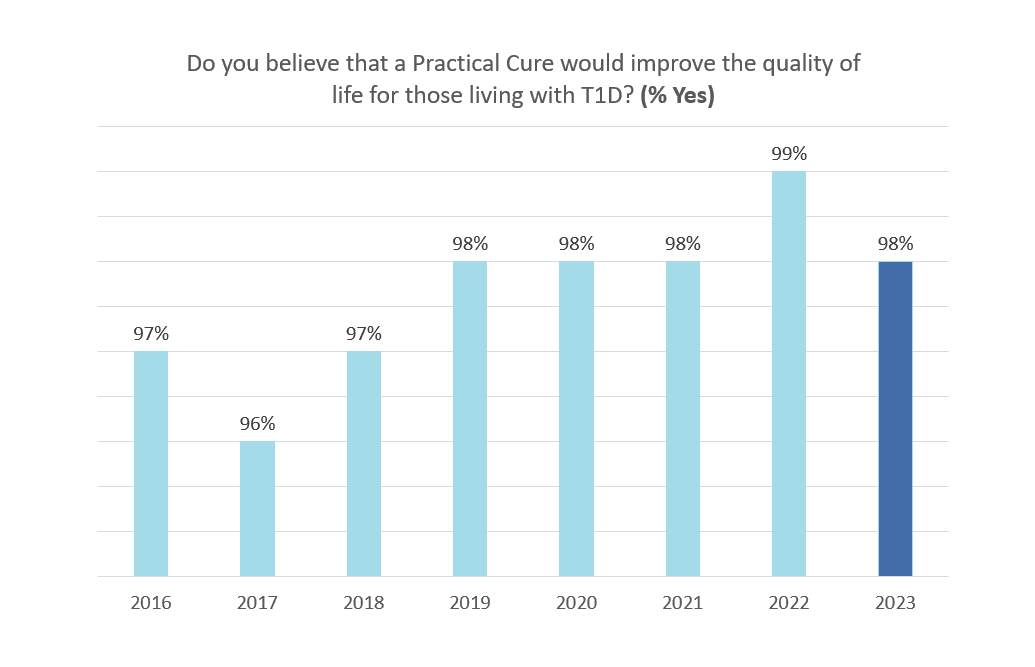
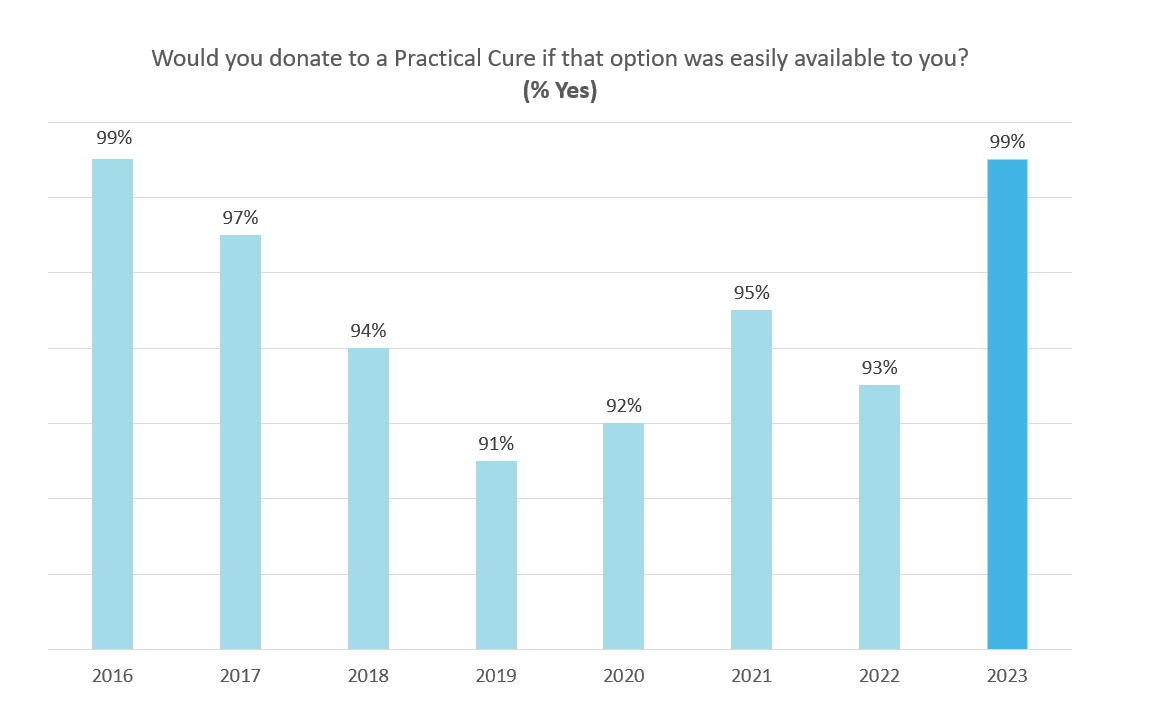
4.) If JDRF and the American Diabetes Association (ADA) Were to Increase the Amount of Money They Gave to T1D Research Grants, Donors Would Dedicate More to These Organizations
The final questions of our survey came as a shock to some participants, bringing to light discrepancies in the allocation of funds from two prominent diabetes associations. It was made clear by survey results that if the JDRF and the ADA promised to contribute a larger portion of their funding towards T1D research, they would attract a much larger number of donors to their organizations.
